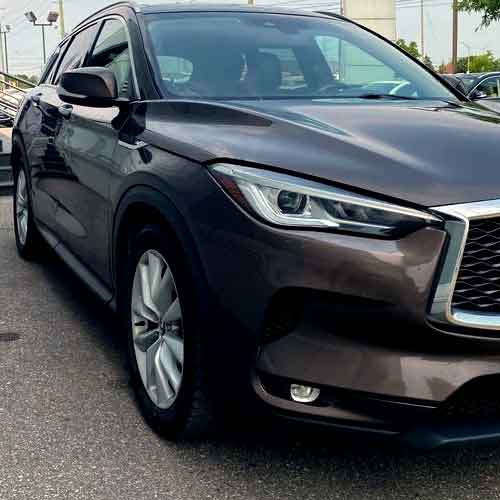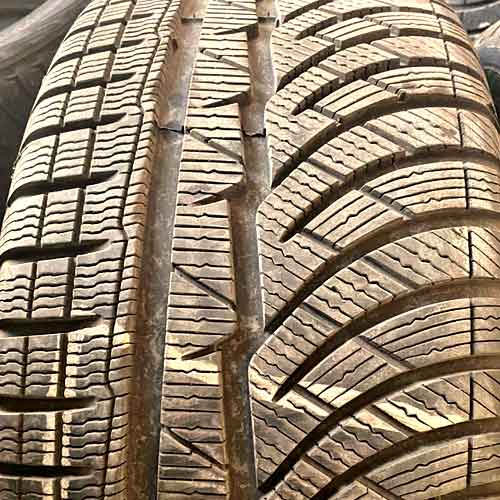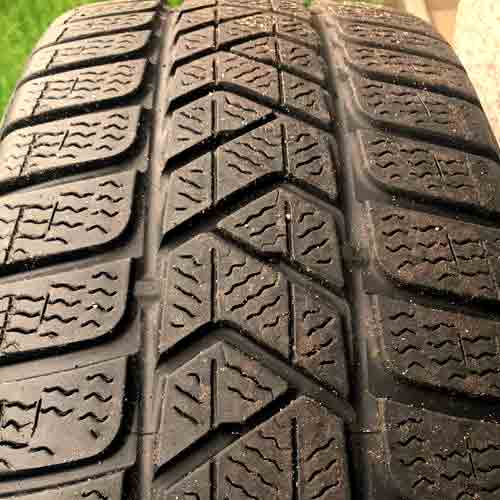Pirelli Winter Sottozero 3, celebrated for its impressive performance in snowy conditions, and Michelin Pilot Alpin PA4, known for its superior handling on ice, are up for a duel. Let’s see which winter tire claims victory!

Table of Contents
Key Takeaway
Michelin Pilot Alpin PA4 excels in:
- Snow Performance: Due to broader grooves for optimized snow-to-snow contact. And since snow sticks better on snow, instead of rubber, that enhances overall friction, better, relatively.
- Hydroplaning Resistance: Thanks to its wider grooves for efficient water dispersion, where its heavier weight also help creating greater negative pressure values.
- Comfort Levels: The tire offers better vibration absorption due to absorbent tread rubber and increased tread depth. (Greater the depth of rubber, more the cushion for the road vibrations).
Pirelli Winter Sottozero 3 stands out for:
- Wet Grip: Where streamlined lugs for better handling performance, as they offer superior steering response in comparison.
- Tread Longevity: Where lighter weight puts less pressure on lugs, resulting in less friction against the road.
- Fuel Economy: Where the tire’s streamlined tread design reduce rolling resistance, achieving better mpg.
- Comfort Levels: The tire reduces road noise with compact shoulder lugs and densely packed central design.
Tire Sizes
On the other side, the Pirelli Winter Sottozero 3 (review) comes in 16 to 21 inches with following specs.
- Speed ratings: H, V and W.
- Load ratings: SL and XL.
- Tread depth: 10/32″ on all.
- Weight: 18 to 32 lbs.
On the other side, the Michelin Pilot Alpin PA4 (review) comes in 51 total sizes in 17 to 21 inches (with following specs).
- Speed ratings: H, V and W.
- Load ratings: SL and XL.
- Tread depth: 10.5/32″ on all.
- Weight: 10 to 36 lbs.
- Tread warranty: 30k miles (whereas the Pirelli doesn’t offer any).
Snow Performance
When it comes to snowy terrains, the Michelin Pilot Alpin PA4 outperforms its competitor.

But why is that happening?
In snowy conditions, tires that optimize snow-to-snow contact tend to excel. And the Michelin, with its broader grooves, fits this criterion perfectly.
It features a symmetric tread adorned with a myriad of triangular-shaped lugs, equipped with in-groove notches that effectively capture snow particles.
This design results in a layer of entrapped snow that interacts with the snowy terrain, thereby enhancing traction.
Snow-to-snow interaction is favored since snow particles adhere more effectively to each other than to rubber.
In contrast, the Pirelli Winter Sottozero 3, with its denser pattern, fails to accumulate as much snow within its grooves, thereby lacking in this area.
While the discrepancy in directional grip and acceleration is significant, the variation in handling is minimal and subjectively feels identical. Thus, on snowy terrain, the Michelin Pilot Alpin PA4 reigns supreme.
Wet Traction
Tire performance on wet surfaces is critically dependent on the tread design and rubber compound. These components influence the tire’s ability to grip wet roads and resist hydroplaning.
Let’s check out both of these one after another, starting with the grip.
Wet Grip
So overall grip highly depends on sipes. These are slits which suck up water, clearing off the road. That way, the rubber is able to properly grip the surface, and there’s no water in between.
Although both models feature substantial siping and flexible tread rubber, the Pirelli Winter Sottozero 3 outperforms, in terms of grip.

This advantage is more noticeable in handling performance, a significant factor in traction
The tire’s advanced water channeling capabilities, facilitated by its multi-angled sipes and notches directed in various ways, ensure grip in all directions while cornering and minimal slippage.
On the other hand, the Michelin, with its laterally-oriented sipes on the shoulders, resulted in slower overall handling times during tests.
Though most of the damage here is done by the tire’s greater weight. This is because with greater overall structure, the tire puts more pressure on it lugs, and this creates greater overall momentum for this tire.
This means, it’s not as easier to stop, in comparison, and during handling, there’s less overall steering balance.
So overall, the wet traction is superior on Pirelli.
Hydroplaning
Hydroplaning is a key safety concern, manifesting when water interferes with the tread’s contact with the road, leading to the tire ‘floating’ and losing traction.
Among the two, the Michelin Pilot Alpin PA4 outperforms in this aspect, with its wider grooves enabling efficient water dispersion in all directions.
And tire’s greater weight is helping to that, surprisingly, (even though it also causes its steering to be sluggish).
So what’s happening here? Well two things:
- The tire’s greater weight is actually because of its greater tread depth, and that combined with its more voided up structure, you get faster water evacuation, leading to improved float speeds.
- As the tire’s greater weight is pushing lugs down, more, the create a better negative pressure (as water is not compressible). So it gushes out with faster speeds.
Contrarily, the Winter Sottozero 3’s compacted up central rib (even though having lateral voids), hampers water movement, particularly laterally, due to the lack of better interconnected lugs.
So overall while the Pirelli’s tire only offers superior wet grip, while Michelin gives you greater resistance to hydro or aquaplaning.
Tread Longevity
When it comes to tread longevity, you should know that it’s predominantly governed by the pivotal concept of rolling resistance, combined with the tire’s tread depth.
Now the irony here is that tread depth is inversely proportional to rolling resistance, though its directly proportional to tread life.
Meaning, with more tread life, a tire would cover more miles to reach the legal minimum tread depth of 2/32″, which is a mandated limit for driving in certain regions such as the United States.
Though at the same time, with greater tread depth, lugs also become prone to bending, and that causes heat and increase in rolling resistance.
Now although the Michelin tire comes with a slightly greater tread depth it’s greater weight, puts it behind its competitor.
Where the Pirelli Winter Sottozero 3, despite demonstrating a lesser degree of durability compared to other options, excels in rendering an outstanding tread life.
Its relatively featherweight stature imparts reduced pressure on its lugs, leading to a diminished rub against the abrasive asphalt, ultimately promoting an extended tread existence.
And Pilot Alpin PA4, imposing/stressing more substantial pressure on its lugs, which subsequently rub against the road surface with greater friction, results with an accelerated wear rate.
So even though the Michelin’s tire comes with a treadwear warranty (of 30k miles), unlike the Pirelli, it still lacks in overall tread life performance.
Comfort Levels
Tire comfort is predominantly dictated by two factors – the level of road noise and the tire’s capacity to absorb vibrations. Both these aspects are heavily dependent on the tire’s design.
The Pirelli Winter Sottozero 3 excels in minimizing road noise owing to its compact shoulder lugs and densely packed central design.
These features limit air movement and subsequently reduce noise generation.
Furthermore, it employs advanced pitch sequencing to further mitigate any residual noise, ensuring a more tranquil ride compared to Michelin.
Speaking of which, the Pilot Alpin PA4 demonstrates superior vibration absorption capabilities, and since that is also a factor here in overall ride comfort, you get better scores in terms of impact comfort, with this tire.
This is due to its more absorbent tread rubber and increased tread depth, which collectively enable superior shock absorption.
So to sum up here, the Pirelli is quieter, while the Michelin offers better ride over bumps.
Fuel Economy
Fuel efficiency in tires is directly related to their weight and traction, both of which influence rolling resistance.
Specifically, a heavier tire with expansive tread voids tends to experience more lug flexing during activities like cornering, braking, or accelerating.
This flexing consumes additional energy, a trait prominently observed in the Michelin’s tire.
As the lugs flex, energy predominantly dissipates as heat, which not only impacts tread longevity but also amplifies the tire’s rolling resistance.
And our tests corroborate this assessment.
That’s why Pirelli Winter Sottozero 3, with lighter weight is taking the lead here.
Moreover, the tire also has the advantage of it’s tread design, where there are more streamlined and longitudinally oriented ribs, minimizes rolling resistance and thus delivers enhanced fuel efficiency.
So simply put, with the Pirelli, you get to achieve more miles per gallon.
Summing Up
So overall, here, the ideal choice depends on individual priorities, as both tires have their pros and cons.
When navigating snowy terrains, the Pilot Alpin PA4 clearly takes the lead due to its design favoring snow-to-snow interaction, which ensures enhanced traction. However, on wet surfaces, the Winter Sottozero 3 showcases superior wet grip, while its counterpart has an edge in resisting hydroplaning, thanks to its effective water dispersion capabilities.
In the realm of tread longevity, Pirelli outshines with an impressive tread life, attributed to its lightweight design, despite its competitor having a treadwear warranty. Moreover, the tire also excels in fuel economy, offering better mileage per gallon due to its efficient design minimizing rolling resistance.
Lastly, in the comfort arena, the Michelin provides a smoother journey over uneven terrains with its superior shock absorption, though it’s not as quiet on roads, in comparison.